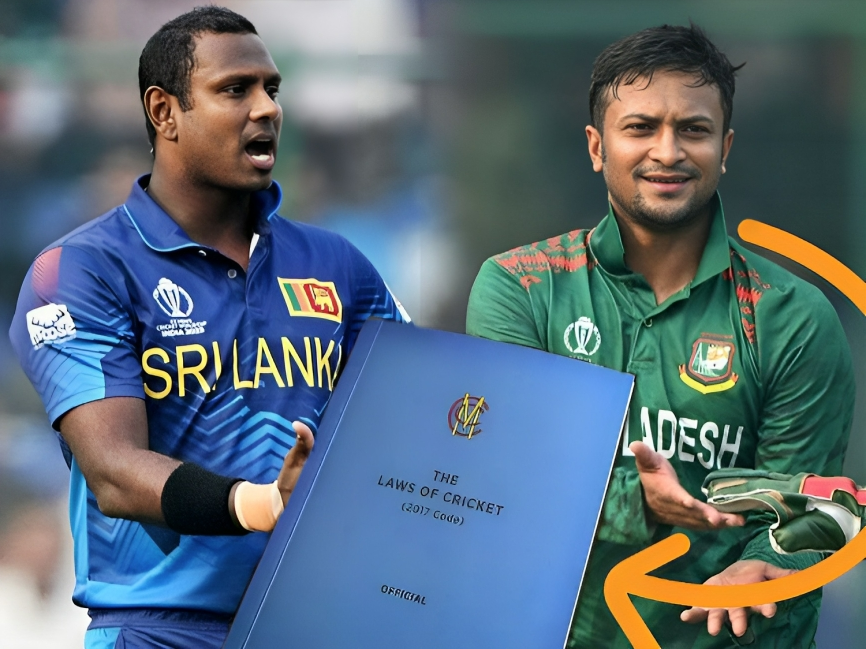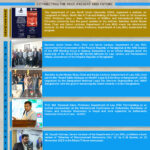The Shakib vs Mathews Debate Through the Dworkinian Lens

A first-in international cricket incident unfolded at the game between Bangladesh and Sri Lanka
in the Cricket World Cup 2023. Things took an interesting turn after the dismissal of Angelo
Mathews in an interesting way, as it was the first of its kind. Complying with the ICC cricket
rules and regulations, 40.1.1, the 2023 World Cup enforces a two-minute time limit for new
batters to be ready to face a ball after a wicket or retirement, with the legal provision of possible
dismissal under “Timed out.” If Shakib hadn’t complied and invoked the rule, letting Mathews
into the crease would have nullified the “timed out” decision.
The dismissal was rather peculiar and quickly stirred controversy, taking the internet by storm as
people were divided over the issue. People were quick to point out that Mathews should not have
been out as it goes against the spirit of the fact that Cricket is a gentleman’s game. In a sport
where traditions run deep, such a phenomenon challenges the rules that govern the game. Others
pointed in favor of Shakib by pointing out that the rules are rules and that Shakib was within his
limit to do what he did.
To answer this intriguing question of whether Shakib’s action violated the spirit of the game, or
his strict interpretation of the rules was right, we turn to the jurisprudential insights of Ronald
Dworkin. His theories on interpretation and law as integrity can offer a unique perspective. His
contributions to jurisprudence started by critiquing positivist on their separation of law from
morality. In his writings, he always opted for a holistic approach to law and echoed that the
underlying values, goals, or principles determine the best interpretation of a rule.
According to Dworkin, the true proposition of law lies with the best interpretation of legal
practice, achieved through moral engagement with the principles and values inherent in that
practice. The relevancy of Dworkin’s emphasis on moral engagement with practice is very much
eminent here. If we want to understand the true nature of the incident, one must delve into the
values and purpose of Cricket. In the realm of Cricket, interpretation, at times, becomes very
crucial. How should we interpret the actions of Shakib and Mathews in the context of the game’s
values and purpose? The moment Shakib decided to uphold the “timed out” rule, he engaged in a
form of creative interpretation – a decision aimed at bringing out the most value from the game.
Shakib’s action, viewed through Dworkin’s two elements of interpretation, the constraints of fit
and justification, provide a framework for evaluating Shakib’s actions. Shakib’s decision to
appeal must fit the actual cricketing practice while justifying adherence to regulations. In
practice, this rule has never been invoked during an international match. Still, it has existed for
quite a long time because invoking this may go against the practice of upholding the spirit of the
game. In this sense, Shakib has gone against the spirit of the game by appealing and invoking the
said rule.
The cricketing community now finds itself divided on the grounds of the game’s interpretation.
The disagreement among fans, players, and analysts about the legitimacy of Shakib’s move can
be viewed through Dworkin’s lens as a disagreement about the best interpretation of cricketing
practice. Shakib’s decisions may legally seem defendable. However, the elephant in the room is
that the metaphysical “spirit” of the game very much existed in Cricket from the beginning of its
creation.
Here, Shakib upheld the appeal to send Mathews to the pavilion by sticking to the strict rules. He
had the right to last say in this matter as the umpire asked him if he (Shakib) was serious enough
to invoke this rule before giving the final decision. But let’s consider a scenario where Shakib
could appeal, but the ultimate decision lies with the umpires. A Dworkinian umpire would apply
Dworkin’s two stages of interpretation, identifying the grounds of law and then applying them
analogously with the best cricket practice. In the first stage, they would identify the grounds –
the rules and regulations that govern the game. In the second stage, they would apply this ground
of rules in a way that, according to Dworkin, shows the law (or, in this case, the cricketing
regulations) in the best possible light.
However, the heart of the matter of this whole saga lies in Dworkin’s concept of integrity. For
Dworkin, integrity is the best interpretation of legal practice, invoking an ideal of community or
fraternity. Translating this to Cricket, integrity becomes the best interpretation of cricket
practice, fostering a genuine community among players and fans. Shakib’s adherence to the rules,
seen through the lens of integrity, insists that Shakib’s doing did not uphold the spirit of the
game. However, if applying this rule goes against the game’s spirit, then such a rule should not
exist in the first place. If a rule exists within the regulations, following it demonstrates integrity,
ensuring fairness and consistency. The saga invites us to shed new light on the game’s ” spirit, “
and if rules are integral to it, why would following a rule be seen as violating that spirit?
Ragib Shahriar2 Posts
The writer is a student of LL.B. (Honours) at North South University.



0 Comments